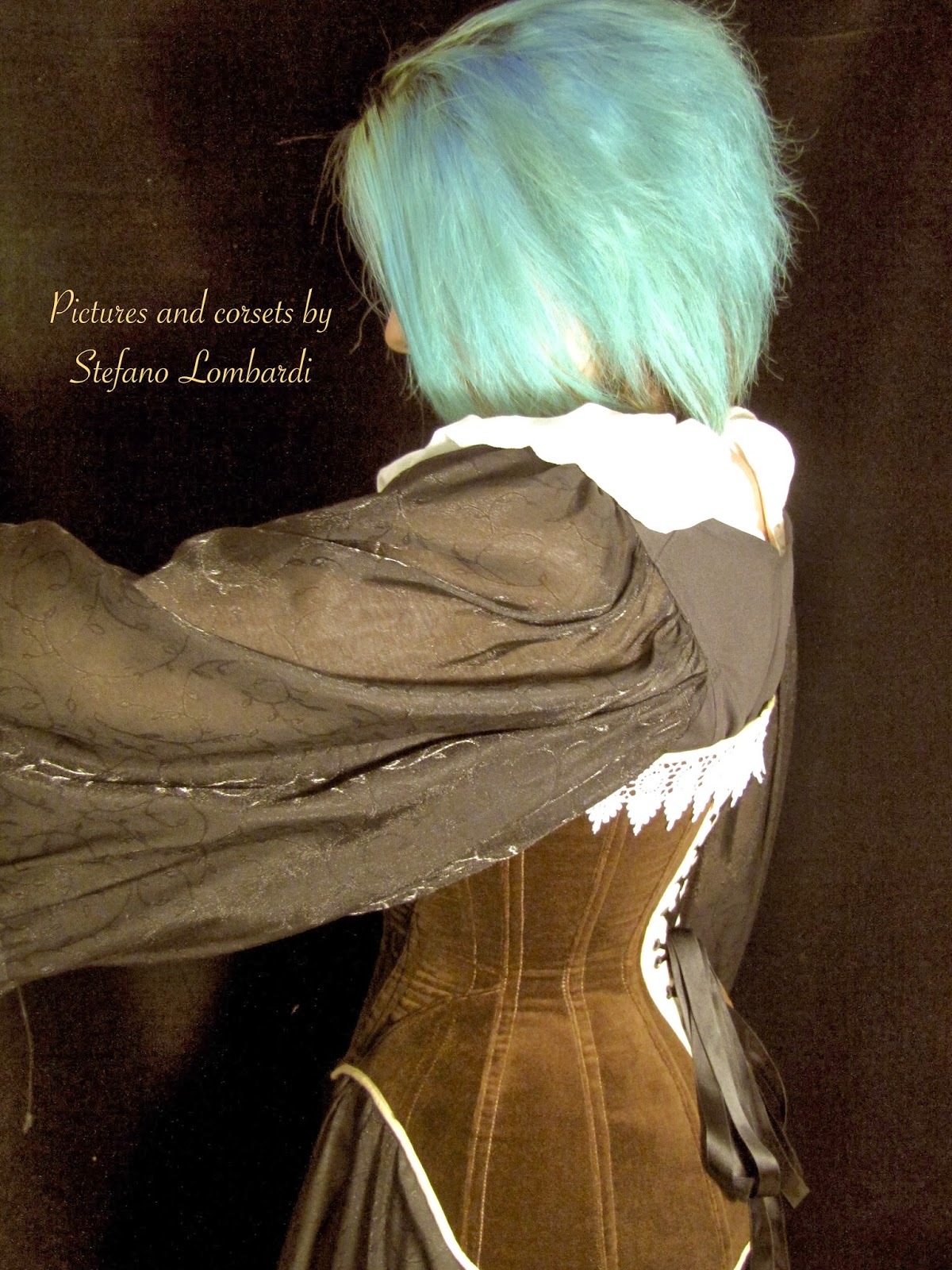Cercando d'ingannare l'attesa, per l'arrivo del materiale che mi servirà a confezionare il corsetto vittoriano e portare a termine il post precedente, parliamo di pizzo e di quanto sia difficile trovare quello giusto!
Oggi, tutti i tipi di pizzo in commercio, hanno una percentuale sintetica (sempre che non lo siano del tutto) pertanto non è semplice riuscire a dare un aspetto "antico"ad un corsetto. Il pizzo è la cosa che attira per prima l'attenzione di chi osserva, ma se quest'ultimo è sintetico, avrà di conseguenza un impatto poco credibile, "falso".
Tuttavia non è difficile creare un' illusione ottica, mi spiego meglio. Se io ho un pizzo sintetico, come il terzo a partire da sinistra nella foto sopra, molto bianco e lucido posso dare l'impressione che sia antico tingendolo, o meglio, ingiallendolo. Il fatto che quest'ultimo è molto lucido potrà sicuramente giocare a mio favore facendolo sembrare di seta.
In altre circostanze però, non possiamo fare altro che affidarci al buon senso cercando di fare attenzione alle misure, si proprio così! le misure.
Le misure a cui mi riferisco sono principalmente due (e più che misure sono proporzioni): quella dalla vita al bordo superiore del corsetto e quella dalla vita al bordo inferiore. Più precisamente, se io mi trovo a dover confezionare un corsetto overbust potrò sicuramente usare dei pizzi alti (se la misura dalla vita in su viene coperta meno di 2/3) nel caso in cui mi trovassi invece a confezionare un corsetto underbust prediligerei, sicuramente, un pizzo molto basso (non superiore ai 2cm).
Un terzo caso molto particolare invece, è quello in cui mi troverei a dover cucire un pizzo sia sulla parte superiore che su quella inferiore del corsetto, perché così facendo dovrei calcolare di più il lato estetico del lavoro. Se è un pizzo pieno, ovvero ricamato su cotone, dovrò usarlo non superiore ai 3 cm; se invece il pizzo che intendo utilizzare è ricamato su tulle (come quello francese) o a uncinetto (quindi con molti spazi vuoti ma con una trama delicata), posso usarli con un'altezza di 10 cm, ma non superiori (questo ultimo però è un consiglio personale, è ciò che farei io).
Grazie per aver letto.
To kill the time, while waiting for the new materials to sew the victorian corset I told you about in the last post, I 'm going to deal with laces and about how difficult it is to find out the right ones.
Today, nearly every lace sold in the shops around the world, is made out with synthetic materials (if not completely man-made), so it has become difficult to make beautiful historically inspired corsets, because the lace is the most attractive thing for our sight, and if it is synthetic it would surely have a "false" appearance.
Nevertheless, it's quite easy to create an optical illusion.
If I have a synthetic lace, as well as the third from left shown in the picture above, white and shiny we could make it seem ancient by dyeing it, or best yellowing it and the fact that the lace is shiny would even help us creating the illusion of a lace made out with silk.
Under other circumstances, we can't do anything else but trust the measurements.
The measurements I'm telling you about are two: The first is the one which starts from the waist line and goes until the upper edge of the corset, the second is the one which goes from the waist line to the lower edge.
Putting this in practice, if i have to sew an overbust corset I wold absolutely choose a lace which covers less than 1/3 of the measurment from the waist to the top edge. Whereas if I have to sew an underbust corset I would choose a lace with a width lower than 3 cm.
Then there is the third case, the case where a costumer wants me to put a lace both on the upper edge and the lower edge of the corset.
In this case we have to main rules to respect, if your lace is embroidered on a fabric similar to cotton, it mustn't be upper than 3 cm, whereas if it is a french lace which is usually embroidered on tulle, you could even use a 10 cm wide lace (not upper than 10 cm, but this is a personal advice).
Thanks for reading.





























.JPG)
.JPG)
.JPG)

